In the 80s Joe Rice returned to working with clay, experimenting with glazes and producing whimsical creatures that little resemble the abstract sculptures of clay, metal and plaster I recall from previous decades, most of which wound up in various gardens and haven't survived. Below are a few examples of the more recent work, along with related excerpts from The Reluctant Artist, Joe Rice 1918 - 2011.

"In Sonoma, he had a potter’s wheel and kiln. If his paintings had arguably become more pedestrian, his clay creatures gave expression to the whimsical side of his personality. There are dragons and what resemble prehistoric ancestors of hippos and rhinos. Frogs striking human poses dominate. Perhaps he was inspired by the Mexican folk art my parents bought during a year-long sabbatical leave from teaching that my father took to study Mexican art when I was in the sixth grade.
Glazed in bright colors, his anthropomorphic frogs stand, sit, lounge on divans, and have round, pregnant bellies. Some of the statues fit neatly in the palm of your hand. Others are large enough for a child to ride, like the two colorful pachyderms that guarded his Sonoma front door.
These unlikely inventions bring a smile.
His ceramics aren’t only amusing. They represent a return of Joe Rice, the artist. While they bear little resemblance to his definitive paintings of the 60s and 70s, the statues are distinctive. In their skilled execution, attention to detail, flair for color, and the occasional flash of the macabre, they are unified and clearly the work of one artist. And there are new facets, not apparent in the earlier work: his abiding affection for young children and animals seen in a frog’s trusting smile, her arms wrapped possessively around her baby.
While my father may arguably have been a stronger, more strident artist in earlier years, in Sonoma, with his second wife, he was perhaps more content. I find proof of that promise in the speckled frog that gazes up at me from my kitchen windowsill."
Glazed in bright colors, his anthropomorphic frogs stand, sit, lounge on divans, and have round, pregnant bellies. Some of the statues fit neatly in the palm of your hand. Others are large enough for a child to ride, like the two colorful pachyderms that guarded his Sonoma front door.
These unlikely inventions bring a smile.
His ceramics aren’t only amusing. They represent a return of Joe Rice, the artist. While they bear little resemblance to his definitive paintings of the 60s and 70s, the statues are distinctive. In their skilled execution, attention to detail, flair for color, and the occasional flash of the macabre, they are unified and clearly the work of one artist. And there are new facets, not apparent in the earlier work: his abiding affection for young children and animals seen in a frog’s trusting smile, her arms wrapped possessively around her baby.
While my father may arguably have been a stronger, more strident artist in earlier years, in Sonoma, with his second wife, he was perhaps more content. I find proof of that promise in the speckled frog that gazes up at me from my kitchen windowsill."
|
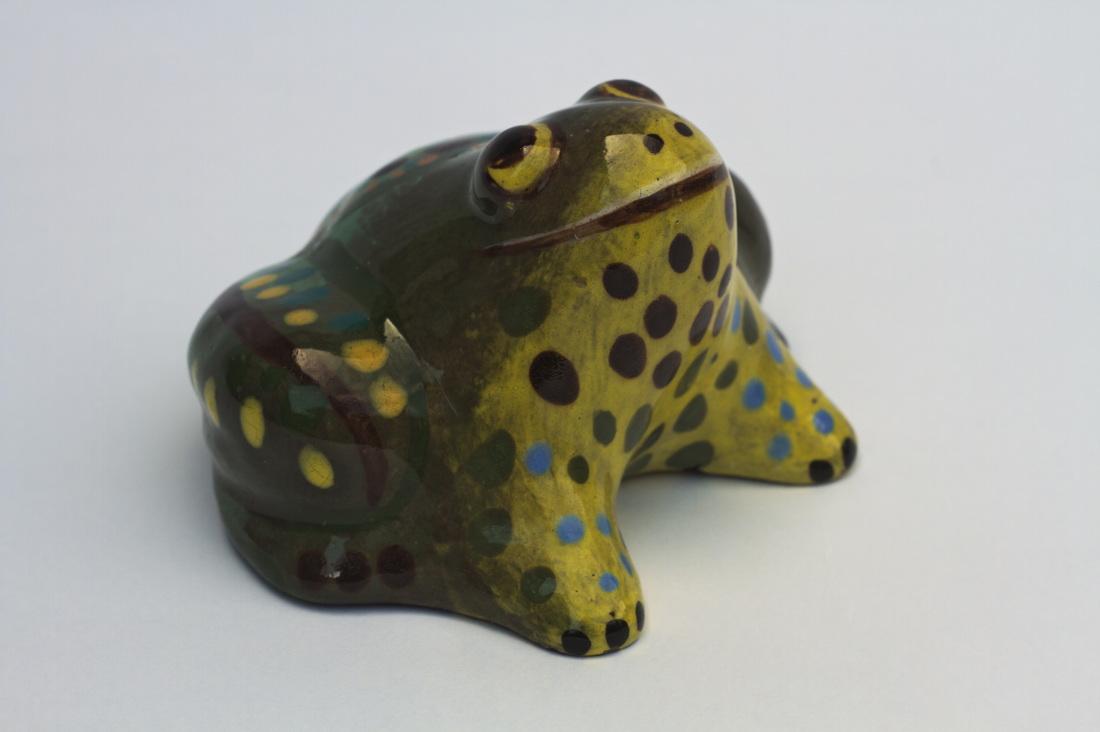
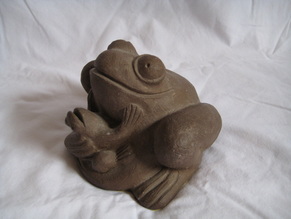
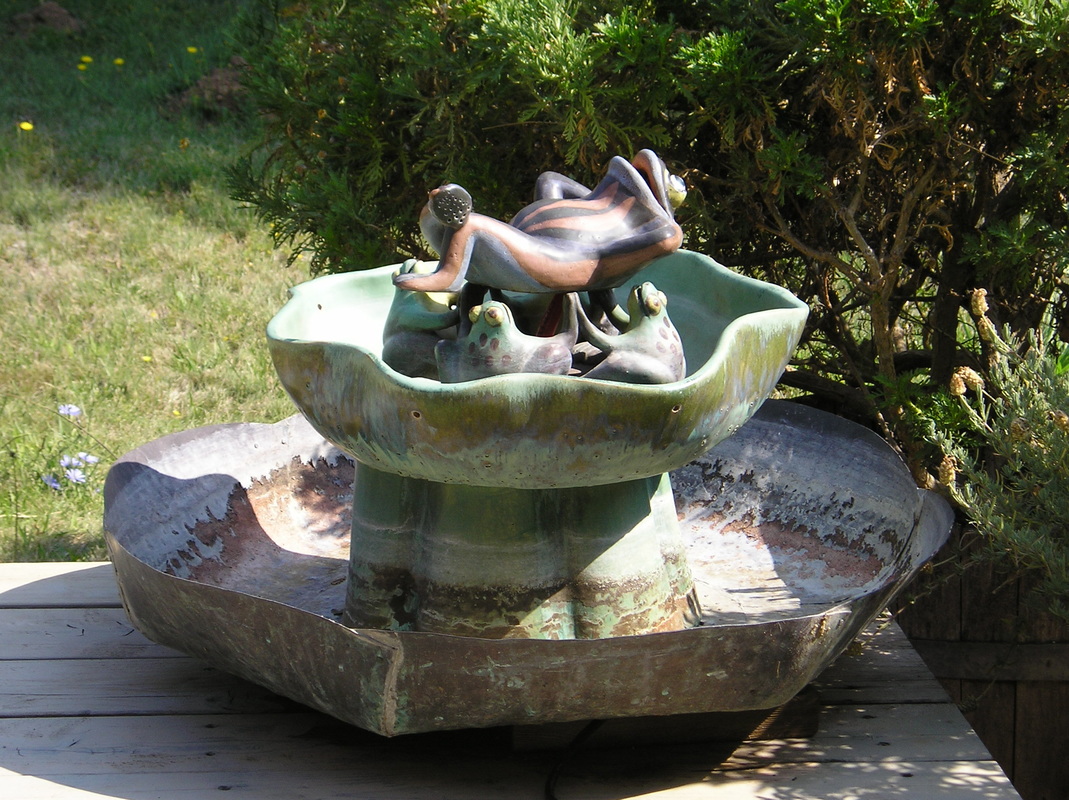
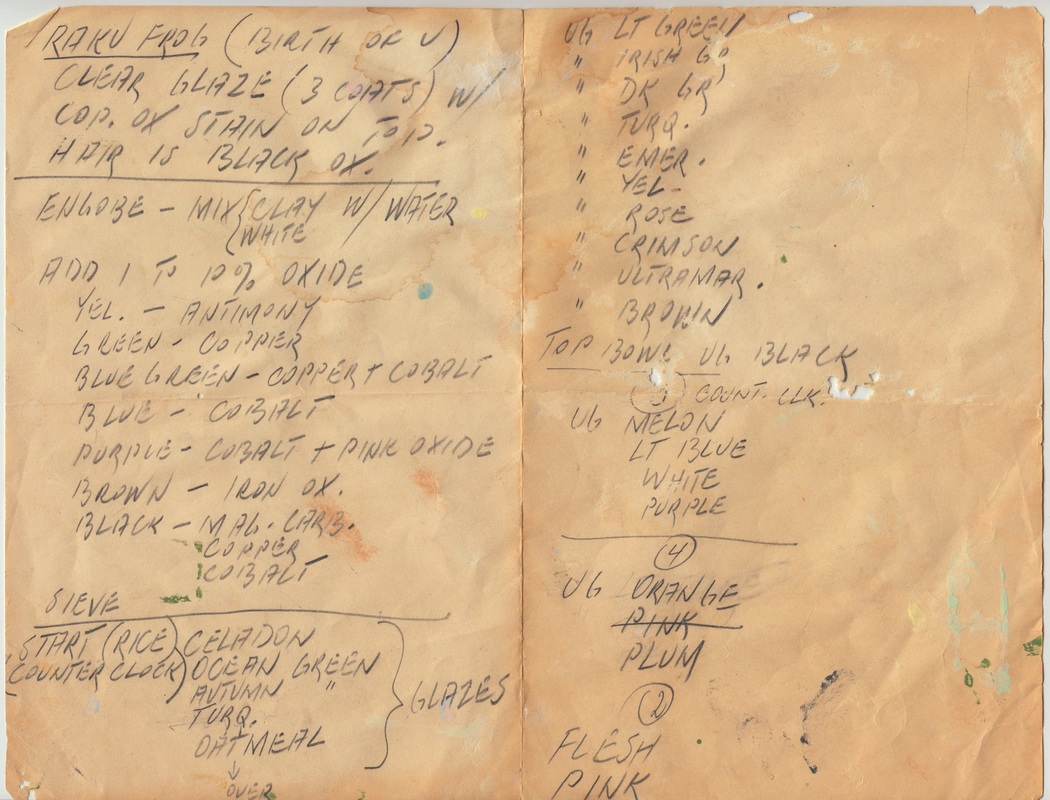
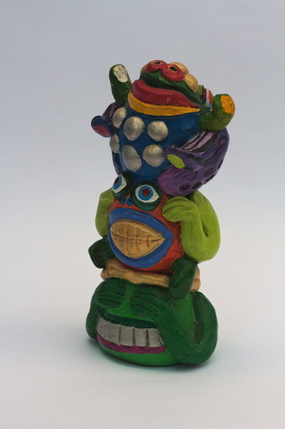
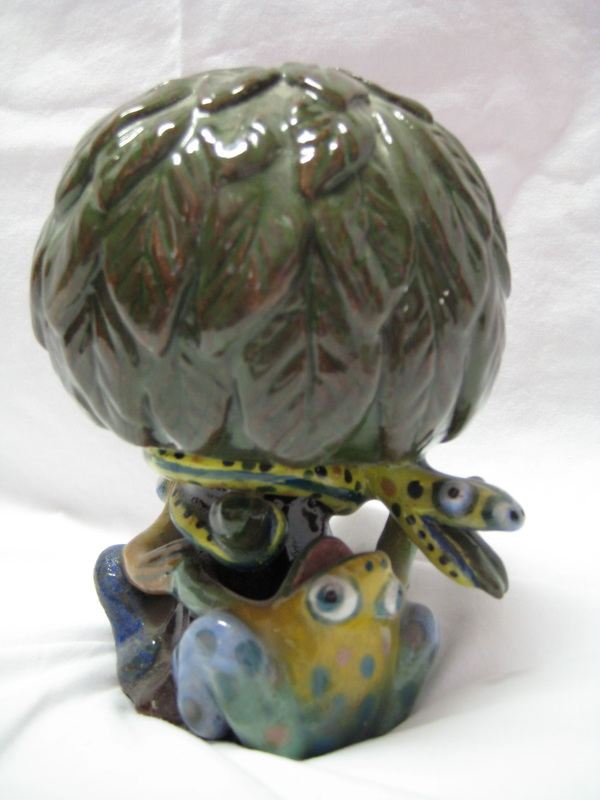
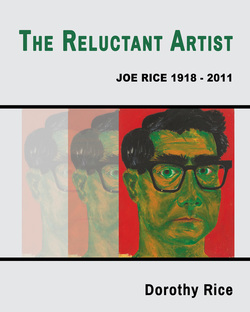
 RSS Feed
RSS Feed
